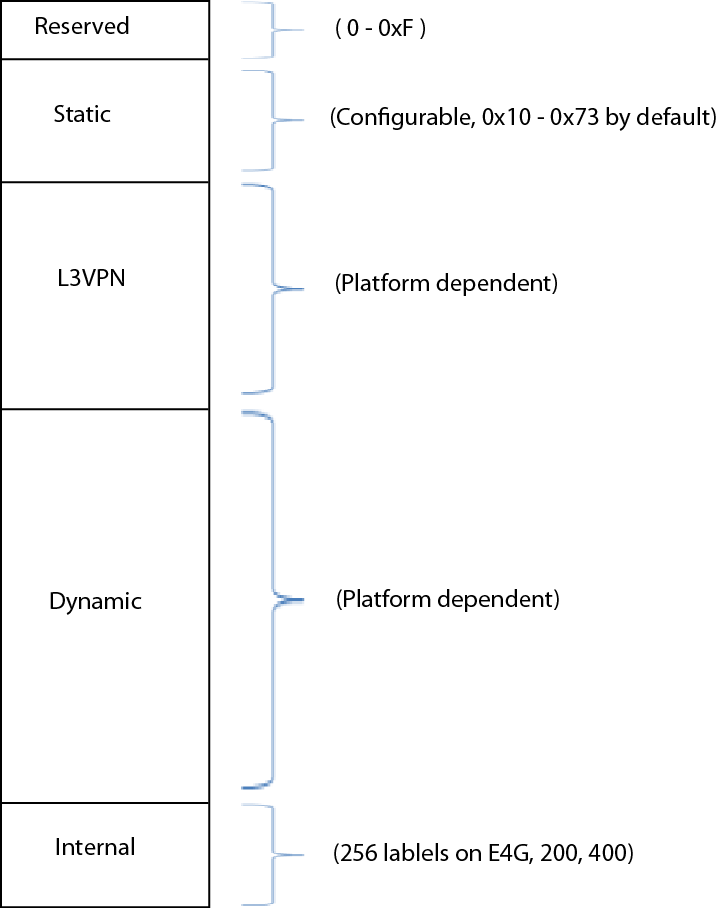The Extreme implementation partitions its label space as described in the following illustration.

Platforms that support MPLS (Multiprotocol Label Switching) divide the incoming (MPLS egress) label space into static, L3VPN, and dynamic label ranges. The static label range starts immediately after the reserved labels at 16 (0x10), and spans up through the configured maximum number of static labels. In ExtremeXOS 15.4, the configure mpls label max-static command is added to allow the static partition range to be changed. Any changes made to the static range affect subsequent ranges.
VRFs used for L3VPNs are allocated from a label range that immediately follows the static range. The remaining label space is called the dynamic label space, and is used by LDP and RSVP-TE. The show mpls label usage command displays the label ranges on a given system. The outgoing (MPLS ingress) label space spans the full 20-bit label range, and is used for all outgoing labels for both LSPs and PWs, static and signaled.
No hard limits are imposed on the maximum size of the label stack, other than the constraint of not exceeding the maximum frame size supported by the physical links comprising the LSP.
Jumbo frames should be enabled on all ports, and the jumbo frame size should be set to accommodate the addition of a maximally-sized label stack. For example, a jumbo frame size of at least 1530 bytes is needed to support a two-level label stack on a tagged Ethernet port, and a jumbo frame size of at least 1548 bytes is needed to support a VPLS encapsulated MPLS frame.

 Print
this page
Print
this page Email this topic
Email this topic Feedback
Feedback